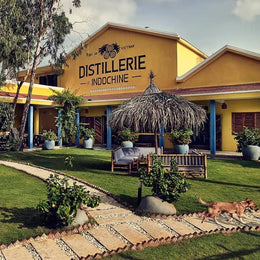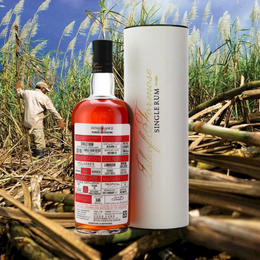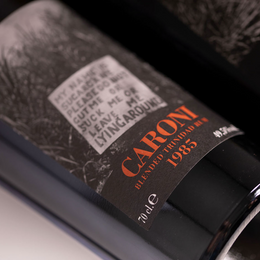Louis Roederer's Cristal Champagne: From Russian Tsar's Personal Bubbly To Global Cultural Icon

"But everybody’s like Cristal, Maybach, diamonds on your timepiece,
Jet planes, islands, tigers on a gold leash,
We don't care, we aren't caught up in your love affair."
So asserts pop singer Lorde in her hit song Royals, with Cristal Champagne being one of these symbols of unreachable luxury far beyond the grasp of the everyday people. Yet do we, the ordinary folk, truly not care? After all, Cristal Champagne in its with its glistening, golden bottles, permeates the very fabric of our aspirational dreams in so many popular songs. It’s synonymous with success and opulence, frequently name-dropped by Jay Z and others in hip-hop and pop tracks alike as a badge of achievement and status.

The flagship cuvée of Champagne House Louis Roederer was officially created in 1876 and dedicated to Tsar Alexander II, the Emperor of Russia. It is widely regarded as the first ever prestige cuvée category of Champagne to be created; meaning that it’s a top-of-the-line range from a producer made from the best grapes from the most favourable vineyards.
Interestingly, unlike other Champagne that come in opaque bottles with a huge indent at the bottom, Cristal Champagne came in transparent crystal with a flat bottom; a signature design that has been the case since 1876.

The Historical Origins of Cristal

Cristal's design and origin is deeply intertwined with a pivotal period in European history, particularly during The Three Emperors' Dinner of 1867. This was a banquet at a Parisian restaurant prepared at the request of the King of Prussia, who gave the chef a “Carte Blanche” order to create such a memorable meal without sparing any expense for himself and his main guest, Tsar Alexander II of Russia.

The menu boasted 16 courses, each a testament to the heights of French culinary art, lavishly adorned with luxurious ingredients and exotic fruits, served over eight hours. The cellar master was instructed to pair this opulent meal with the finest wines he could find, amongst which he selected a Châteaux Margaux, Châteaux Lafite and a Champagne made by Louis Roederer which captivated Tsar Alexander.
While the royals dined in opulence, this was a time when ordinary Russian people struggled just to survive. The countryside was marred by severe famines and food shortages. Entire villages starved to death and desperate peasants resorted to eating grass or tree bark. All this happened while Tsar Alexander was complaining that his meal did not include a dish of foie gras. News reports of this high-profile banquet laid bare the profound disconnect between the ruling classes and the suffering peasantry, who faced unimaginable hardships.

Shortly after the Three Emperors’ Dinner, he appointed Louis Roderer to supply Champagne for his personal consumption. But while the Tsar loved to experience the finer things in life, the amount of social unrest led him to also be incredibly paranoid of assassination attempts. This paranoia led him to make some unusual requests. The Tsar ordered Louis Roderer to deliver the Champagne in specially designed decanters that are transparent and do not have a punt at the base. The Tsar believed that a transparent bottle would allow him to see if poison has been added to the Champagne. A flat-bottomed Champagne bottle also prevented explosives from being hidden beneath them.
Tsar Alexander’s paranoia was not unfounded. Six prior Russian kings have died by assassination while Alexander himself had faced at least 5 attempts on his life. To appease the Tsar, Louis Roderer commissioned a Flemish glassmaker to create a special crystal bottle without a punt at the bottom – and this is the birth of the iconic Louis Roderer prestige cuvée known as “Cristal”.

Unfortunately, the Tsar would not live to enjoy many vintages of Cristal because he was killed by a suicide bomber in 1881.
Transition to a Public Cultural Icon
The reign of the Tsars ended in 1917, and with it the Cristal was discontinued. It wasn’t until 1945, right after the end of World War II, when perhaps everyone was in a celebratory mood, that the Champagne House decided to revive the Cristal and offer it to commercial consumers in the same flat-bottomed crystal bottling dedicated to Tsar Alexander.

Initially crafted for the tastes of an emperor, Cristal's availability to a broader audience didn't dilute its prestige. The production process remains dedicated to selecting the finest grapes and employing meticulous winemaking techniques, ensuring that the series continues to meet the high standards set by its royal origins. Cristal Champagne today still uses the same bottle design, but bottles are no longer made with leaded crystal due to lead poisoning concerns. Bottles now also come wrapped in golden cellophane – a necessity because a transparent bottling doesn’t shield the wine from the harmful effects of UV light.

In 2002, Cristal received a perfect score from the prestigious Wine & Spirits Magazine – a virtually unheard-of achievement for Champagnes. It has also acquired the status of a Veblen Good; a conspicuously consumed luxury product that defies the rules of economics (because the higher a Cristal is priced, the greater demand it generates). The brand leaped into the collective psyche of popular culture, particularly within the music industry, being name-dropped in countless songs and music videos by Tupac Shakur, Kanye West, 50 Cent and with Jay-Z’s Can’t Knock the Hustle being one of the most iconic references: “My motto, stack rocks like Colorado/Auto off the champagne, Cristals by the bottle.”
Cristal had become a cultural icon.
How Cristal Champagne is Made for Wine Snobs & Wine Lovers

Despite popular culture’s obsession with Cristal, the brand has the nonchalance of a royal in the attention it receives, preferring to ultimately focus on wine lovers instead of people looking to brandish a status symbol. Louis Roederer proudly remains the only major Champagne House that is independent and family-run. It also produces less than 10% of Champagne by volume per year compared to other high end brands like Dom Pérignon, which suggests a craft producer's dedication to quality over profit.

The managing director and owner of Louis Roderer, Frederic Rouzaud in 2006 made a passing comment implying that ostentatious hip-hop artists posed an unwelcome attention for the brand and lamented “what can we do? We can’t forbid people from buying it.” This statement lives on in infamy with Jay-Z and the hip-hop community who immediately vowed to boycott the brand. Almost like response in a diss track, Cristal’s Rouzaud released an apology statement that went on to say: "As winemakers, we cannot deny that we have occasionally been a little dismayed at seeing our wine sprayed around in celebration instead of being savored in a glass."
So how do these purist winemakers make their wine?

Cristal is made from a blend of 60% Pinot Noir and 40% Chardonnay from Louis Roederer’s most precious 45 chalk plots in 7 Grands Cru vineyards in the Champagne region – specially reserved for making Cristal. Unlike other Champagne houses that buy their grapes from small owners, Louis Roederer had purchased much of its own vineyards since the 1800s, and claim to have complete control over how the grapes were grown and intimate knowledge about exactly which vineyards had the best quality grapes.
Louis Roederer also began shifting towards organic farming in 2000, reverting to hundred-year-old methods of tending to vineyards, completely eschewing pesticides, and even tilling the land with horses.

Cristal Champagnes are only bottled by the vintage year, rather than being a blend of wines from multiple harvest years. This allows it to express a more singular character of the vintage year. Interestingly, wine experts also recognise Cristal as one of the most age-worthy Champagnes in the world. The Champagne house cellar ages the wine for about 6-and-a-half years before a bottle is released. But even after that, Cristal still stands up to very long-term aging in the bottle. Notable Champagne expert Peter Liem has once opined that Cristal Champagne should be further aged by its owner for another 10 to 20 years to reveal the wine’s true complexity.

Across vintages, Cristal Champagnes tend to display a blend of crisp citrus, toasted bread, minerality and nuttiness, with slightly lighter and more floral notes compared to other brands of Champagne. It’s described as a somewhat austere Champagne that reflects the terroir of the limestone soils of Louis Roderer’s precious vineyards. But as Peter Liem mentioned, one ought to taste a really old Cristal to understand its full breadth and depth. It is a wine that, if you could afford to wait, rewards you with a phenomenal story.

@CharsiuCharlie




